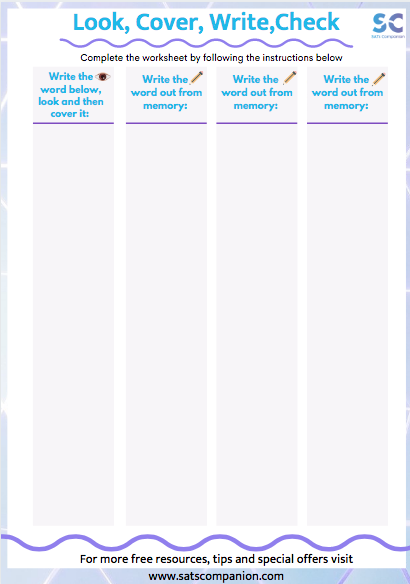
We all know that when it comes to spelling, sitting your kids down and getting the job done is never easy. However, as your child moves into Year 6, spelling complex words with precision becomes even more important. As Victor Hugo once said, “To learn to read is to light a fire; every syllable that is spelled out is a spark”. Spelling can open the door to many adventures for your child. SATs aside, spelling is a key skill for pupils as they start to transition from primary to secondary school.
It may seem like an impossible quest to teach your child, but we hope these tips will help you boost spelling and build your child’s confidence.
There are many techniques you can use to support your child with their spelling. Taking a few simple and regular steps can put your child on track in class, which will definitely develop their confidence throughout the year.
Continue reading to find out our top tips and tricks on how you can help your child with their spelling as they start their journey in Year 6.
1. Spelling games:
Spelling games are a great way to teach your children how to spell words. The low-pressured, fun environment is a highly effective technique to engage your child. These games can be online or in person, but it is important that you make the games as interactive as possible to ensure you have your child’s full attention. Why not create a word search or check out; Spell Zone for entertaining online spelling games.If you’re struggling to find games that aren’t online, you can check out Pinterest for some spelling games inspiration. Pinterest is always a useful place to search for resources, and there are many innovative game suggestions that will definitely engage and encourage students to take part in practicing their spelling. For example, try playing spelling battleship or spelling scrabble, which can help them with their maths at the same time .

2. Help with homework:
Helping your child with their homework is an extremely effective way to help your child with their spelling. Regularly reading through their work and underlining any words that are incorrect can help develop a feel for whether words look right. You could also work with your child by asking them to write down any words that they need to remember and can also help them as the physical act of writing words down helps the word stick to memory.

3. Find the right resources:
Learning how to spell takes time and is a gradual process and as all children are different, they require different resources. Some children may be visual learners where they need to see the words written down whereas others may be a verbal learner where they need to sound each word out loud. Therefore, it is important to find the right resources for your child, for example a visual learner may require a word mat or writing words out repeatedly in different colours. You could even make pocket cards with your child, where you create small cards to fit in your pocket or bag and you ask your child to spell out the words to you when you randomly pick one at any point throughout the day. Try finding resources online in order to meet your child’s needs.
4. Use visual memory:
Visual memory is a great way to help your child remember how to spell certain words. Sticking post-it notes around the house is an effective method as your child will see the words every day and eventually be able to recall the spelling using their visual memory. This method can work with all sorts of everyday objects, such as, fridge magnets and posters.You can also check out the resources we provide at SATs Companion. Our popular SPAG placemat can be used as a poster to stick around the house and may help with grammar terminology. This visual method is great for children who are reluctant readers. The placemat is a way for you to improve your child’s vocabulary as a whole which will definitely help with their spelling.
5. The ‘look, cover, write, check’ method:
This method is a simple yet effective method. To use this method, give your child a word to spell and let them look at the spelling, cover it, write the spelling next to the word, and uncover it to see if they have written the word correctly. Although this method isn’t as fun as online games, you can use this as an opportunity to reward good performance with something fun. Try downloading copies of our ‘Look,cover, write,check’ worksheet for some extra help. Click here to download.

6. Online practice papers;
Completing SATs spelling practice papers is a great way to help prepare your child for spelling tests. With regular practice, you will be able to spot patterns in your child’s spelling knowledge and will allow you to target their revision to the word groups that they are struggling with. SATs Companion is a great resource for parents to sign up and boost your child’s development. Our software allows your child to complete tasks and carry out practice tests and is a great way for you to track their progress in order to focus on the areas they need to improve. Full spelling tests are included within the subscription. Try SATs Companion for free for 14 days https://satscompanion.com/
Whatever method you choose to use, if you carry it out with consistency you will soon see major improvements in your child’s work. We hope this guide was helpful enough for you to identify your child’s needs.


